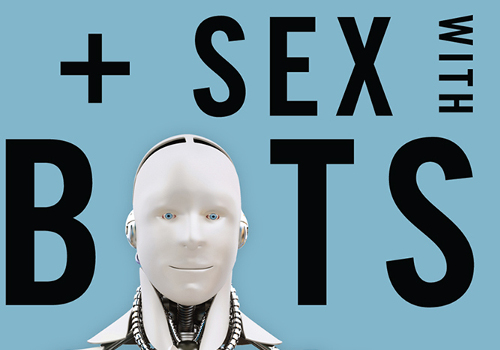Book and Article Recommendations
From time to time, people ask me for book recommendations pertaining to my research area (Natural Language Dialogue meets Robotics meets Artificial Intelligence). Unfortunately, I rarely have a satisfying answer to this question, as I don’t actually know of any books that sit at this precise intersection of fields. Everything I know about my research area I learned by reading conference papers and journal articles; if there are books on the topic, I’d love to read them, and I should be reading them, but unfortunately I’m just not aware of the existence of any such books.
What I can do is recommend (1) survey articles on closely related topics, and (2) books on more tangentially related topics. Here we go!
Survey Articles
Human-Robot Interaction
I work in the Human-Robot Interaction Lab. What the heck is Human-Robot Interaction? If you’re interested in this question, I’d read Socially intelligent robots: dimensions of human–robot interaction by Kerstin Dautenhahn. This article gives a great overview of HRI, why it’s important, and what typifies an HRI Experiment.
Social intelligence in robots has a quite recent history in artificial intelligence and robotics. However, it has become increasingly apparent that social and interactive skills are necessary requirements in many application areas and contexts where robots need to interact and collaborate with other robots or humans. Research on human–robot interaction (HRI) poses many challenges regarding the nature of interactivity and ‘social behaviour’ in robot and humans. The first part of this paper addresses dimensions of HRI, discussing requirements on social skills for robots and introducing the conceptual space of HRI studies. In order to illustrate these concepts, two examples of HRI research are presented. First, research is surveyed which investigates the development of a cognitive robot companion. The aim of this work is to develop social rules for robot behaviour (a ‘robotiquette’) that is comfortable and acceptable to humans. Second, robots are discussed as possible educational or therapeutic toys for children with autism. The concept of interactive emergence in human–child interactions is highlighted. Different types of play among children are discussed in the light of their potential investigation in human–robot experiments. The paper concludes by examining different paradigms regarding ‘social relationships’ of robots and people interacting with them.
DIARC
While the previous article gives a great explanation of the field of HRI, it mainly focuses on human-subject experiments; in the HRI Lab, this is only one branch of our research. The other main branch of our research is on the development of AI Algorithms to facilitate the goals of HRI, i.e., natural human-robot interaction. For an overview of the algorithm development that goes on in our lab, I’d read Novel mechanisms for natural human-robot interactions in the DIARC architecture by Scheutz et al. (Disclaimer: I’m one of the al.’s you can call me Al.)
Natural human-like human-robot interactions require many functional capabilities from a robot that have to be reflected in architectural components in the robotic control architecture. In particular, various mechanisms for producing social behaviors, goal-oriented cognition, and robust intelligence are required. In this paper, we present an overview of the most recent version of our DIARC architecture and show how several novel algorithms attempt to address these three areas, leading to more natural interactions with humans, while also extending the overall capability of the integrated system.
Natural-Language Dialogue
For a more targeted overview of the types of problems I’m interested in, I’d read the following three papers:
Statistical Techniques for Natural Language Processing
Statistical Techniques for Natural Language Processing by Eugene Charniak: this paper is almost two decades old, but it gives an easy-to-parse (pun!) overview of the main problems in NLP.
We review current statistical work on syntactic parsing and then consider part-of-speech tagging, which was the first syntactic problem to be successfully attacked by statistical techniques and also serves as a good warmup for the main topic, statistical parsing. Here we consider both the simplified case in which the input string is viewed as a string of parts of speech, and the more interesting case in which the parser is guided by statistical information about the particular words in the sentence. Finally we anticipate future research directions.
Challenges for Spoken Dialogue Systems
Challenges for Spoken Dialogue Systems by James R. Glass: this paper is almost as old, but it paints a good picture of where the problems from the previous paper sit in relation to the other problems in dialogue processing.
The past decade has seen the development of a large number of spoken dialogue systems around the world, both as research prototypes and commercial applications. These systems allow users to interact with a machine to retrieve information, conduct transactions, or perform other problem-solving tasks. In this paper we discuss some of the design issues which confront developers of spoken dialogue systems, provide some examples of research being undertaken in this area, and describe some of the ongoing challenges facing current spoken language technology.
Recent Approaches to Dialog Management for Spoken Dialog Systems
Recent Approaches to Dialog Management for Spoken Dialog Systems by Cheongjae Lee et al.: this paper is much newer, and shows how the field of Natural Language Dialogue has evolved since the Glass paper was published. Some of the same problems are waiting to be solved, and other problems are brand new.
A field of spoken dialog systems is a rapidly growing research area because the performance improvement of speech technologies motivates the possibility of building systems that a human can easily operate in order to access useful information via spoken languages. Among the components in a spoken dialog system, the dialog management plays major roles such as discourse analysis, database access, error handling, and system action prediction. This survey covers design issues and recent approaches to the dialog management techniques for modeling the dialogs. We also explain the user simulation techniques for automatic evaluation of spoken dialog systems.
Books
The four books I’d recommend are much broader in scope.
Godel, Escher, Bach
First, I’d recommend Godel, Escher, Bach by Douglas R. Hofstadter. This is the book that got me hooked on A.I. and Cognitive Science. I am by no means unique in this position; at one point, there were four different copies of this book in my lab. As the title suggests, Hofstadter ties together elements of the number theory of Godel, the art of Escher, and the music of Bach. Parts of the book are pure fun (e.g., cyclic engravings by Escher, followed by music by Bach that reads the same backwards and forwards, followed by a dialogue that reads the same backwards and forwards), and parts of it are pretty dense number theory. It’s almost 800 pages but I’ve read it twice and periodically revisit particularly entertaining sections. It’s a masterpiece that will inspire you to think about AI, and it’s only $15 on Amazon. Go buy it now.
Robot Ethics
For something a little more robot oriented, I’d recommend Robot Ethics, a collection of essays by robo-ethicists. Some essays are certainly better than others (subjective opinion), and I’m still working my way through it, but it will certainly change the way you think about robot warriors and sexbots, both of which present a whole host of interesting ethical questions, and, oh, both of which are already here. This book is $20 on Amazon.
The Cambridge Handbook of Computational Psychology
Okay. This one’s a bit of a sell. The Cambridge Handbook of Computational Psychology (ed. Ron Sun) It’s $70 on Amazon ($45 used). That being said, you can find various chapters from it around the internet. This is a collection of survey articles on various cognitive modeling topics. The first few chapters of the book are on modeling paradigms (Connectionist, Bayesian, Dynamical Systems, Logical, Production Systems) by some of the biggest names in the respective areas. The rest of the book describes computational models of various mental processes: episodic memory, categorization, decision making, psycholinguistics, scientific explanation, etc. It’s an invaluable resource for someone interested in cognitive science (well, it’s a $70 resource).
Natural Language Understanding and Pragmatics
If you’re interested in learning about my specific research area, I’d recommend Georgia M. Green’s Natural Language Understanding and Pragmatics, for so many reasons. This little book is only around 150 pages, and will cost you around $20 on Amazon. Now that might sound like a high cost-per-page ratio but I really can’t reccommend this book strongly enough. It’s an accessible, informative, concise, and well-organized introduction to the various topics of import to my main field of study: pragmatic analysis. While it contains no algorithms or even much in the way of discussion thereof, this is an incredibly useful little book that has gotten me excited with lots of new ideas, despite the fact that it’s 20 years old. I would recommend it to both academics and lay persons alike: it’s short, it’s sweet, it’s fascinating.
Conclusions
Those are my suggestions! I would love to hear others’ suggestions for accessible but substantial material in related fields.




Leave a Comment